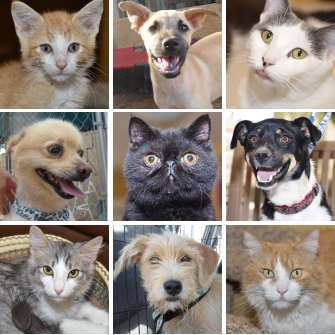Feral Cats
For detailed information on feral cats please go to:
What is a feral cat and what should I do if I find one?
A feral cat has had little or no human contact during its natural life. Some people consider feral cats to be nuisances because they can exhibit behavior such as marking their territory, howling at night, fighting, and destroying property. Because feral cats are usually not spayed or neutered they reproduce at an alarming rate, which results in more cat problems and public health concerns.
The animal welfare community in general is concerned about the health, safety and welfare of the cats in our communities, as well as the public’s health. There is over 20 years of documented proof that traditional ways of dealing with feral cats don’t work. The catch and kill method of population control (trap a cat, bring it to a shelter, ask that the cat be euthanized), has not reduced the number of feral cats. The cat may be gone, but now there is room for another cat to move in.
We have all heard the saying, “Nature abhors a vacuum.” By creating that hole in a neighborhood feral cat colony, we encourage fighting, spraying of territory and breeding. In addition, female cats in distressed colonies tend to produce more offspring than those in stable colonies. So, catch and kill actually makes the problem worse.
The Trap, Neuter and Return (TNR) of feral cats is a proven, humane method of feral cat population control. Through TNR, cats are humanely trapped, sterilized and released back into the environment in which they were living. Cats that have been sterilized are ear tipped (one centimeter is removed from the tip of the left ear) to identify that they are part of a managed colony.
All About Animals does not have a feral cat program so we recommend contacting the following local programs with specific questions:
The Foundation for Homeless Cats
Animal Defense League of Arizona




